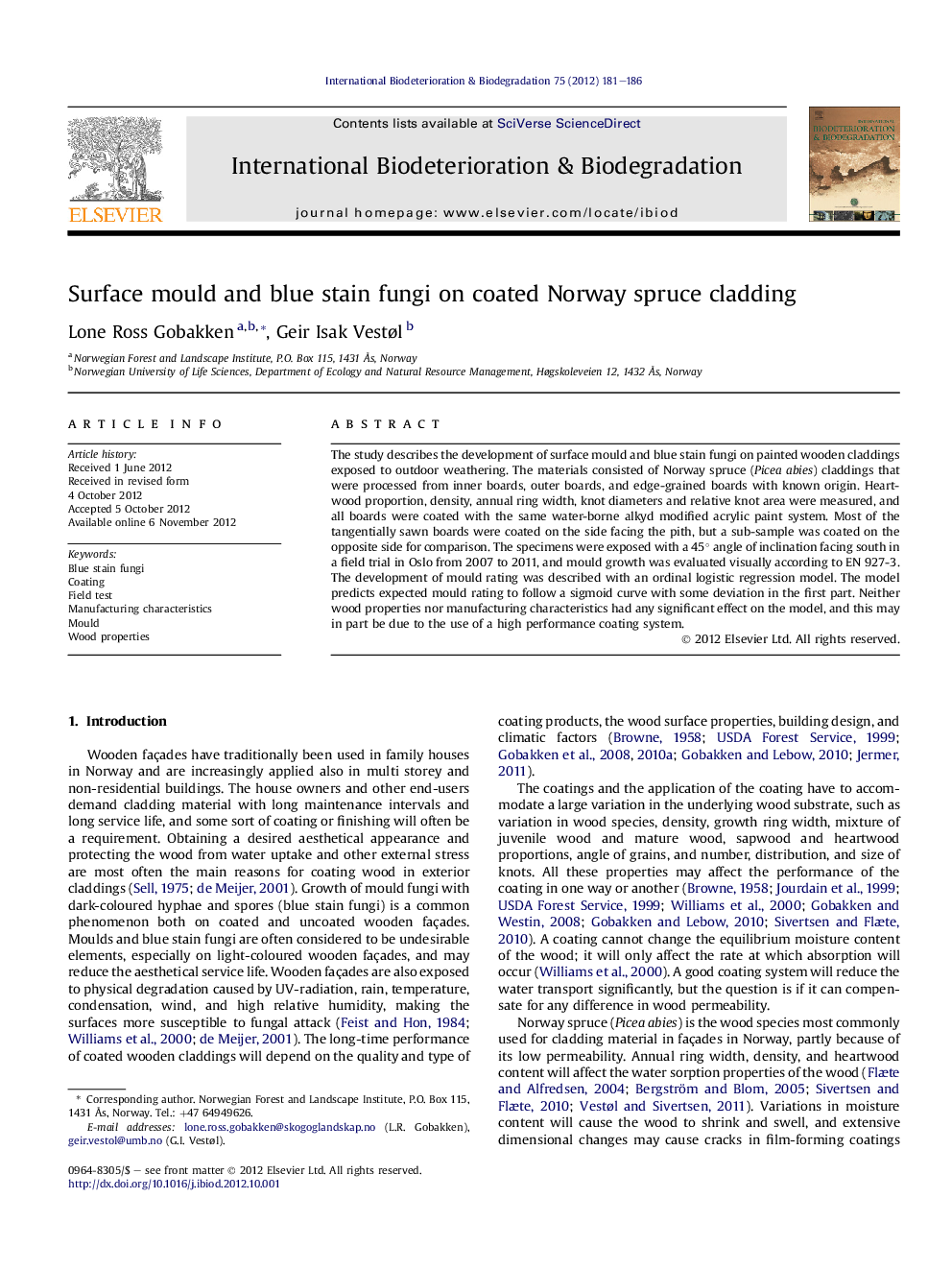| Article ID | Journal | Published Year | Pages | File Type |
|---|---|---|---|---|
| 4365221 | International Biodeterioration & Biodegradation | 2012 | 6 Pages |
The study describes the development of surface mould and blue stain fungi on painted wooden claddings exposed to outdoor weathering. The materials consisted of Norway spruce (Picea abies) claddings that were processed from inner boards, outer boards, and edge-grained boards with known origin. Heartwood proportion, density, annual ring width, knot diameters and relative knot area were measured, and all boards were coated with the same water-borne alkyd modified acrylic paint system. Most of the tangentially sawn boards were coated on the side facing the pith, but a sub-sample was coated on the opposite side for comparison. The specimens were exposed with a 45° angle of inclination facing south in a field trial in Oslo from 2007 to 2011, and mould growth was evaluated visually according to EN 927-3. The development of mould rating was described with an ordinal logistic regression model. The model predicts expected mould rating to follow a sigmoid curve with some deviation in the first part. Neither wood properties nor manufacturing characteristics had any significant effect on the model, and this may in part be due to the use of a high performance coating system.
► Mould growth on claddings is described with an ordinal logistic regression model. ► Expected mould rating follow a sigmoid curve throughout the exposure period. ► Wood properties have limited effect on mould growth on coated spruce claddings. ► Manufacturing characteristics also have limited effect on mould growth. ► A high-quality coating conceal effects of the substrate on the surface mould growth.
